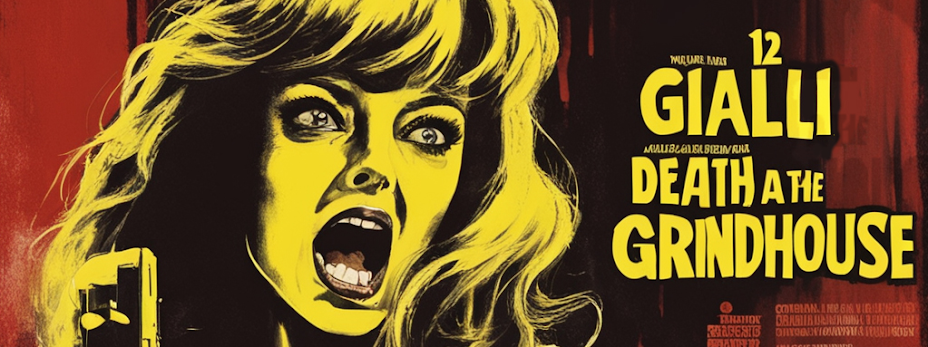Yes, we all know the term and we think to know what it means. But basically, all we know is the term "Grindhouse-movie". This refers to those movies shown in shabby cinemas to an uninterested crowd of hobos, dealers, homeless, prostitutes, trenchcoat-men and adventure-seeking juveniles like me.
But what exactly is a Grindhouse, and how does it differ from a Cinema.
Well, let's dive into this:
With the advance of 35mm-prints, movie reels became big and heavy. Rolled up, they would be too clumsy to handle. So big and heavy that it was impossible to lift and project a full-length feature at once. It helped that movies were split up into acts, like theatrical plays. So basically the movie was split into 3 acts (prime movie) or 2 acts (B-movie) roughly of the length of 30min each (hence around 60min for B-Pictures and 90min for A-Pictures).
 |
| Two, I said! |
 |
| Yes, you needed 2 of them! |
Because of this, if you use only one projector, you have to stop the "transmission" and give the audience an "intermission" where the projectionist has to unload the first reel and to upload and fiddle in the next reel. If you use 2 projectors and aim them at the same screen you can switch between the two reels and if you were a good projectionist, hardly anyone would notice. To give signal to the projectionist, when to start the second projector, small triangles were cut out of a frame in the movie, showing up as a white triangle on the upper right side. Sometimes the ends of those reels were damaged, then usually a projectionist would burn a hole with a cigarette into the print in the appropriate frame (refer to John Carpenter's phenomenal "Cigarette Burns" for more info on that subject).
Basically that meant that each 30 minutes, the projectionist had to be ready to change the reels, and in between he would do the rewinding of the first reel and so on. Basically, he was busy the whole film long.
 |
| Only the plates, not the projectors |
The German Willi Burth then thought of two things, why not project the reels from the horizontal, and is there a way to run them all through one projector and do you need to rewind it? These are three things. I know. Well he came up with the "Platter System" that looks like this:
Going horizontally of course means that the movie has to be brought into the vertical positon for projection wich of course would stress the material, esp the surface that held the colors/the image. Now you could project even bigger formats like 70mm.
The movies were still distributed to the cinemas in 3-7 reels, but by taping them together and using a complicated system of angular feeders a movie could be projected in a near-endless loop.
All the projectionist now had to do was to switch the thing on and off and switch the plates. And thus, the multiplexes were invented, where one projectionist could operat up to 4 platter-systems at once.
Of course this damaged the films, As the picture is just a chemical sunstance ON the Film, not IN it, it would wear off.. Taping the reel-endings together too. But still, we are not in a grindhouse.
The grindhouse was one (or one room in multiplex) cinema where they showed one movie basically 24/7, where you could enter when you wanted and leave too. The movies played there were low on plot and technique but high of "entertainment": A middle aged man in trenchcoat would have his cinematic desires satisfied after 20-30 minutes, so every 20 minutes, there had to be a stimulus.
The movie print absolutely did not like this kind of handling and wore off. Basically at the end of 2-3 weeks the print was unusable, which is why only the cheapest prints (at the end of their lifespan or cheap movies made especially for those movies) were shown.
And that, I might close, was a grindhouse.
I am not familiar with the legal workings in other countries. In Germany however, it was illegal to show pornography in a cinema, but legal to show in a club. A club was defined through the amount that was spent on beverages and cigarrettes. So the work around was that with each ticket, beverages or cigarretes were sold which made up 51% of the bill, to be consumed inside the cinema.




































































